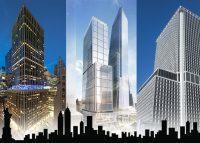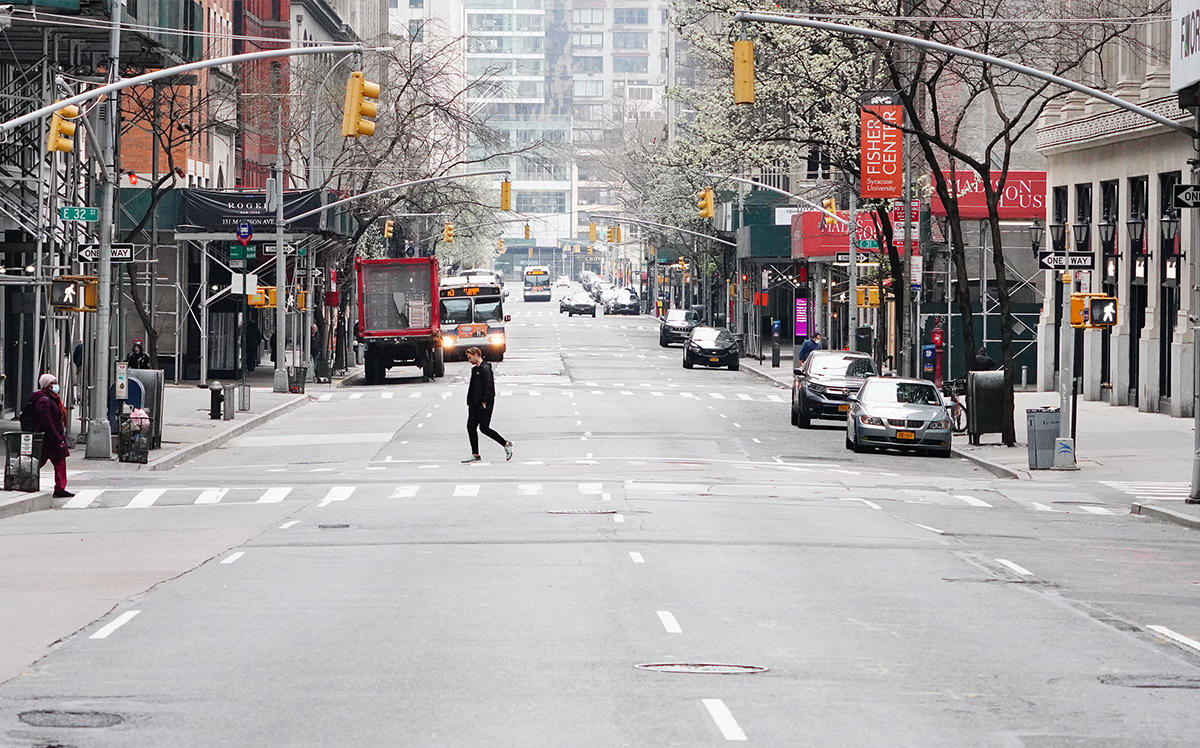 Manhattan office leasing just had its most active year since 2001
Manhattan office leasing just had its most active year since 2001
Trending
Manhattan office leasing just had its worst quarter since 2013
Deal volume declined 25 percent year-over-year

On the heels of its busiest year in nearly two decades, office leasing in Manhattan ended the first quarter of 2020 on a low note, with the coronavirus pandemic putting a damper on all types of economic activity.
Leasing volume for the quarter totaled 6.82 million square feet, the fewest since the third quarter of 2013, according to a new report from Colliers International. More than half of that total came from January, which saw 3.56 million square feet in leases in inked. Deal volume fell in February to 2.1 million square feet and again in March to 1.16 million. The quarter’s total was also 26 percent below the five-year average.
Read more
 Manhattan office leasing just had its most active year since 2001
Manhattan office leasing just had its most active year since 2001
 Apple is in talks for a lease at Vornado’s 11 Penn Plaza
Apple is in talks for a lease at Vornado’s 11 Penn Plaza
Amid the slowdown, the Downtown market continued to increase its share of overall leasing activity, accounting for nearly a quarter of it.
“The Manhattan office market is not at all homogenous. As the first quarter ended, there were clearly pockets — such as Lower Manhattan — that outperformed the rest,” said Franklin Wallach, Colliers’ senior managing director for New York research. “Overall leasing volume decreased across Manhattan and we will continue to monitor the impact of Covid-19 on the market as we enter the second quarter.”
The Midtown submarket saw 2.96 million square feet in leasing activity in the quarter, down 31 percent year-over-year. The largest deal was financial services firm Cantor Fitzgerald’s 152,000-square-foot renewal at Jack Resnick & Sons and the Ruben Companies’ 110 East 59th Street.
Midtown South, including Hudson Yards and the Penn District, saw 2.16 million square feet in deals in the quarter, including the two largest: law firm Debevoise & Plimpton’s 531,000-square-foot lease at Tishman Speyer’s Spiral, and Apple’s 220,000-square foot lease at Vornado’s 11 Penn Plaza. Both tenants had been pushed out of their initial targets by Facebook, at 50 Hudson Yards and the Farley Building, respectively.
Downtown’s leasing volume totalled 1.69 million square feet, down 34 percent year-over-year. Unlike the other submarkets, where FIRE tenants — finance, insurance and real estate — led the way, TAMI tenants — technology, advertising, media and information — were the most active sector in this submarket, accounting for 36 percent of volume.
The largest deal went to fashion retailer L Brands, the parent company of Victoria’s Secret, which inked a 220,000-square foot lease at the Retirement Systems of Alabama’s 55 Water Street.
The slow quarter also saw the overall availability rate in Manhattan rise slightly to 10.2 percent. Undeterred by the slowdown, the average asking rent rose slightly, to $79.47 a foot.
The second quarter figures to be far more challenging than the first, but some in real estate are taking the long view.
“The New York City office market has been tested numerous times over hundreds of years through wars, diseases, natural disasters, recessions and terrorist attacks,” said Wallach. “Each time, the New York City market comes back stronger.”




